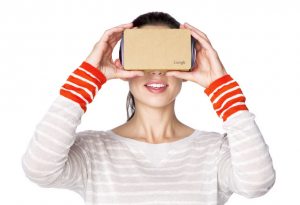
After more than 40 years of operation, DTVE is closing its doors and our website will no longer be updated daily. Thank you for all of your support.
Google Cardboard leads as VR headset shipments reach 30m
More than 30 million VR headsets shipped last year, with Google Cardboard taking a “commanding share” of shipments and installed base, according to Strategy Analytics.
The research firm’s ‘VR Headset Platform Market Share Year End 2016’ report said that Google’s low-price Cardboard option took 69% of shipment volume market share last year.
Samsung Gear came next with 17% of the market, followed by Sony with 3% share. This was for its PlayStation VR headset, which launched around the world in October.
The HTC Vive, Oculus Rift and Google Daydream platforms each accounted for 1% or less of shipment volumes, though Strategy Analytics noted that a six-way split among VR vendors marks an “increasingly fragmented landscape”
“Our data shows that Google has a commanding lead in terms of shipments and installed base for its ultra-low cost Cardboard VR platform, and the size of the audience is already attracting marketers and brands looking to use VR as a promotional tool,” said David MacQueen, executive director of Strategy Analytics’ VR ecosystem research program.
“However, it accounted for merely 12% revenue share. The higher-spec smartphone VR platform, Samsung Gear VR, took top spot by revenues with a 35% revenue share. Sony’s successful PS VR launch sees that platform take second place by revenues, and between them Sony and Samsung captured more than half of VR hardware revenues in 2016”.
Strategy Analytics senior director, Cliff Raskind, said: “Six competing ecosystems makes for a market which is crowded and fragmented. 2017 is sure to be an interesting year and we expect some shakedown as the competing ecosystems either cement their position or fall by the wayside.
“Hardware revenues or audience alone will not be enough to win, and we will continue to track the ecosystem evolution as new use cases, apps, and industries beyond gaming and media grow the market for VR and AR.”



